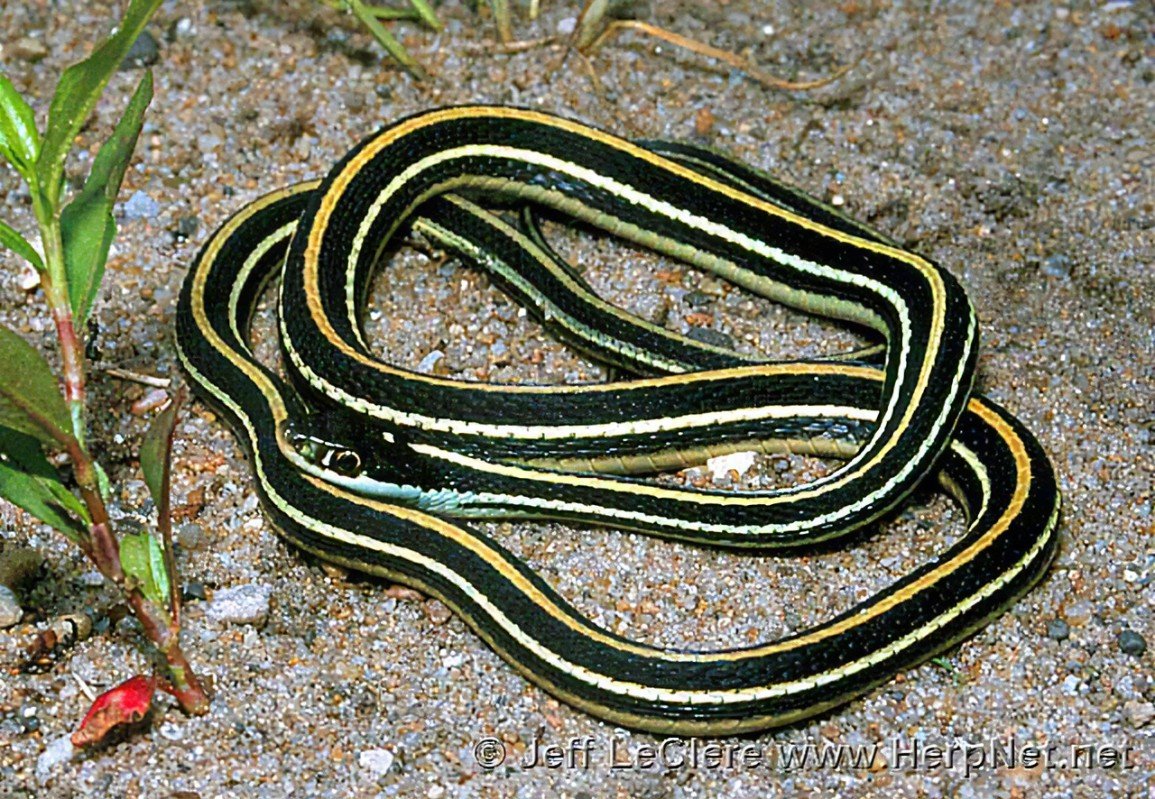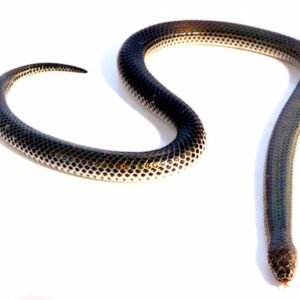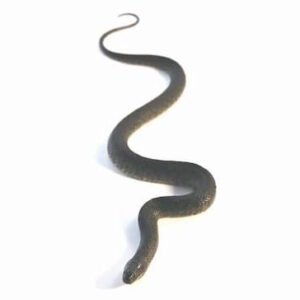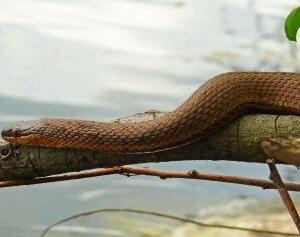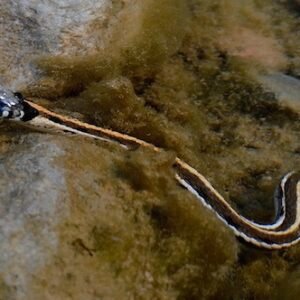Exploring the Western Ribbon Snake: Characteristics, Habitat, and Conservation
Physical Characteristics of the Western Ribbon Snake
The western ribbon snake, scientifically known as Thamnophis proximus, is an intriguing species within the colubrid family, recognized for its slender physique and distinctive coloration. Typically, adults range in length from about 20 to 50 inches, with males generally being smaller than females. This notable sexual dimorphism reveals that females not only attain greater sizes but may also possess a more robust body than their male counterparts. Understanding these differences is crucial for herpetologists and enthusiasts alike, as this information plays a vital role in identifying the species.
In terms of coloration, the western ribbon snake is marked by a striking combination of colors that can vary based on geographic location. Generally, they exhibit a base coloration of dark brown or black, adorned with bright yellow or white longitudinal stripes running the length of their bodies. These vibrant stripes, coupled with a lighter underbelly, serve as effective camouflage within their natural habitats. Banding patterns and the differentiation of scale texture are key visual traits; while the snake’s dorsal scales are smooth, its ventral scales can be noticeably lighter, contributing to its sleek appearance.
The scales of the western ribbon snake are another remarkable feature, as they are often described as glossy, which enhances their ability to reflect light and blend into their surroundings. This adaptation aids in their predatory behavior as well as in evading potential threats. Additionally, their elongated body and tapered tails allow for agile movement through both aquatic and terrestrial environments. Observations of their locomotion demonstrate their ability to glide effortlessly through grasses, reeds, and even water, underscoring their adeptness in navigating diverse habitats.
Habitat and Distribution
The western ribbon snake (Thamnophis proximus) is primarily associated with a variety of freshwater habitats that provide both food and shelter. This species exhibits a preference for environments such as wetlands, marshes, and the edges of streams and rivers. These habitats are crucial for their lifestyle, offering abundant prey and suitable conditions for basking and breeding. The availability of water is essential, as the western ribbon snake often relies on aquatic environments not only for hunting amphibians and fish but also for hydration and thermoregulation.
Geographically, the distribution of the western ribbon snake spans several states across North America. This species is predominantly found in the central and western regions, including states such as California, Oregon, and parts of Texas and New Mexico. The western ribbon snake thrives within wetland ecosystems, allowing it to utilize its unique hunting skills effectively. The presence of lush, dense vegetation in these areas offers ample cover from predators while facilitating successful foraging.
Factors influencing the habitat preferences of the western ribbon snake include temperature, humidity, and vegetation structure. These snakes are typically found in habitats where there are abundant cover and basking spots, which are vital for their thermoregulation behaviors. Unfortunately, human activities such as urban development, pollution, and the draining of wetlands have significantly impacted the natural environments of the western ribbon snake. Habitat destruction diminishes their available range, leading to population declines and localized extinctions in certain areas. Thus, understanding their habitat and distribution is critical for effective conservation efforts aimed at safeguarding this unique species and its ecological role within the ecosystems it inhabits.
Diet and Behavior
The western ribbon snake (Thamnophis proximus) exhibits a diverse diet that primarily consists of amphibians, fish, and small invertebrates. This snake is an adept hunter, utilizing a combination of ambush tactics and swift movements to capture its prey. Its feeding strategy often involves lying in wait near water bodies, where it can swiftly strike at unsuspecting amphibians or fish that come too close. The western ribbon snake possesses a slender body and agile capabilities, allowing it to navigate through aquatic environments with ease, further enhancing its hunting prowess.
Behaviorally, the western ribbon snake is known for its basking habits. This reptile often takes advantage of warm, sunny days, spending time on rocks or logs to elevate its body temperature, which is essential for maintaining its metabolic processes. Basking not only aids in thermoregulation but also assists in digestion after its numerous meals. During its active period, the snake may be observed exhibiting a range of behaviors such as shedding its skin, which is a critical part of its growth cycle. Shedding occurs several times a year, enabling the snake to remove parasites and allow for healthy growth.
Mating behavior in the western ribbon snake typically takes place in the spring. During this period, males actively search for females and engage in courtship displays to attract potential mates. Once mating is successful, females will later lay eggs, which exhibit specific environmental requirements for incubation. Socially, western ribbon snakes are often solitary, except during the breeding season when interactions become more frequent. They may also share their habitat with other species, such as amphibians and fish, yet maintain a non-competitive stance, coexisting within the same ecosystems. The combination of a varied diet and distinct behaviors enables the western ribbon snake to thrive in its natural habitat.
Conservation Status and Threats
The western ribbon snake (Thamnophis proximus) is currently categorized as a species of concern due to its declining populations and the various threats it faces. One of the most significant challenges to its survival is habitat loss, primarily driven by urban development, agricultural expansion, and wetland drainage. As these environments are altered or destroyed, the western ribbon snake’s essential habitats are diminished, resulting in a fragmented ecosystem that complicates their ability to thrive.
Additionally, pollution poses a considerable threat to the health and sustainability of western ribbon snake populations. Contaminants from agricultural runoff, industrial discharge, and urban pollutants can negatively impact both the snake and its prey. The introduction of toxins can lead to diminished food sources and health issues, which further exacerbate their population decline. Furthermore, climate change is creating alterations in temperature and precipitation patterns, which can disrupt the delicate balance of their natural habitats, contributing to further distress for this species.
Efforts are underway to counter these concerning trends, including various conservation programs that focus on habitat restoration, public awareness campaigns, and legal protections. In many regions, the western ribbon snake is protected under state laws, which restrict activities that may harm their populations or habitats. Conservationists advocate for enhanced legislation and habitat conservation strategies that can help maintain suitable environments for the western ribbon snake to flourish.
Individuals can play an integral role in conservation efforts by promoting awareness of the western ribbon snake’s plight and actively participating in local conservation activities. Simple actions, such as supporting sustainable land-use practices, participating in clean-up events, and reporting pollution incidents can make a significant difference. By engaging in these initiatives, members of the community can contribute to preserving the habitats of the western ribbon snake and ensuring its survival for future generations.

